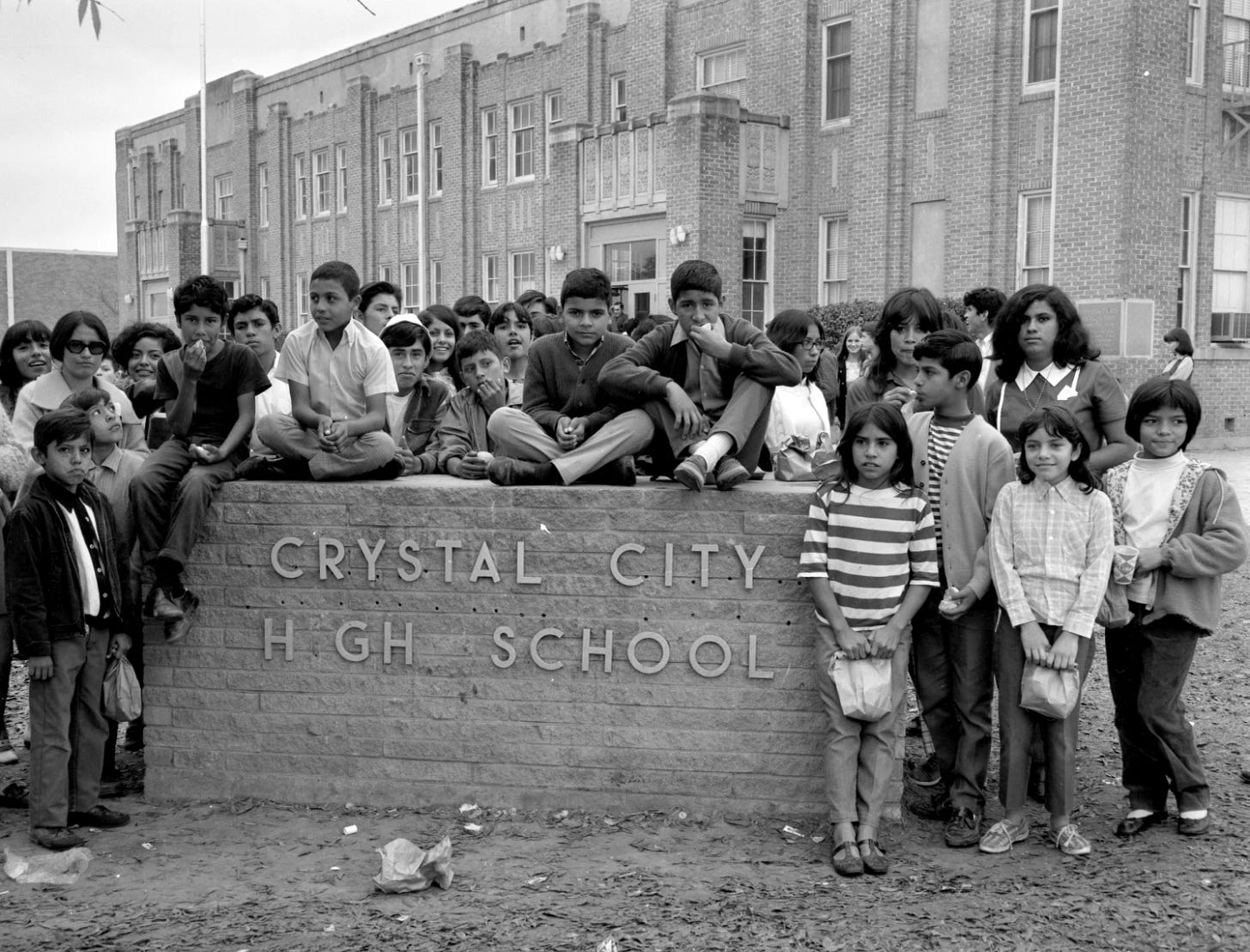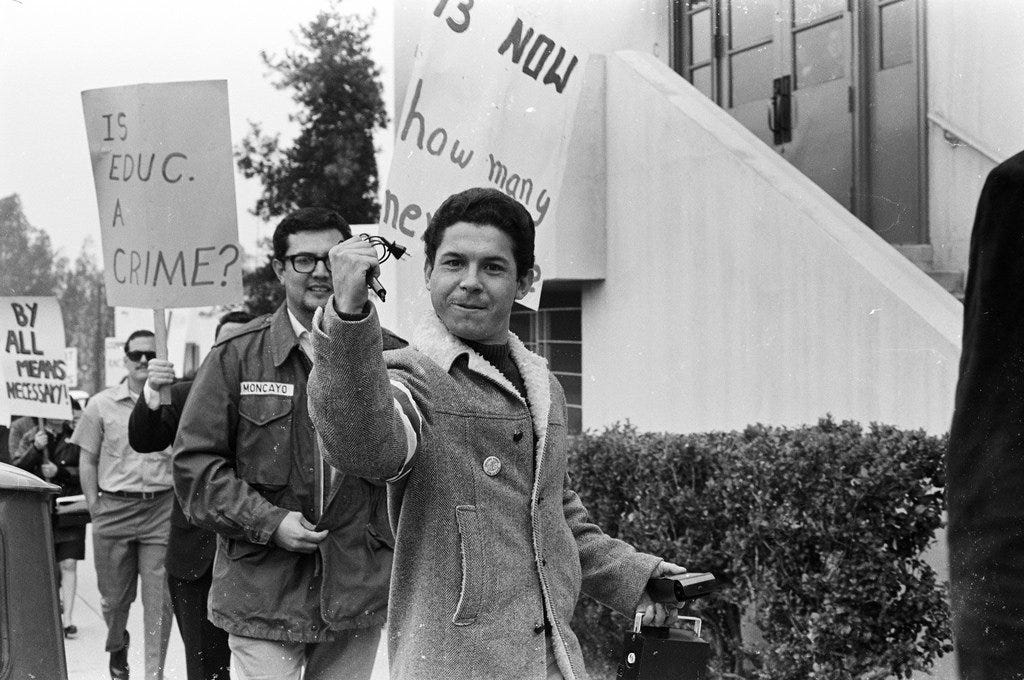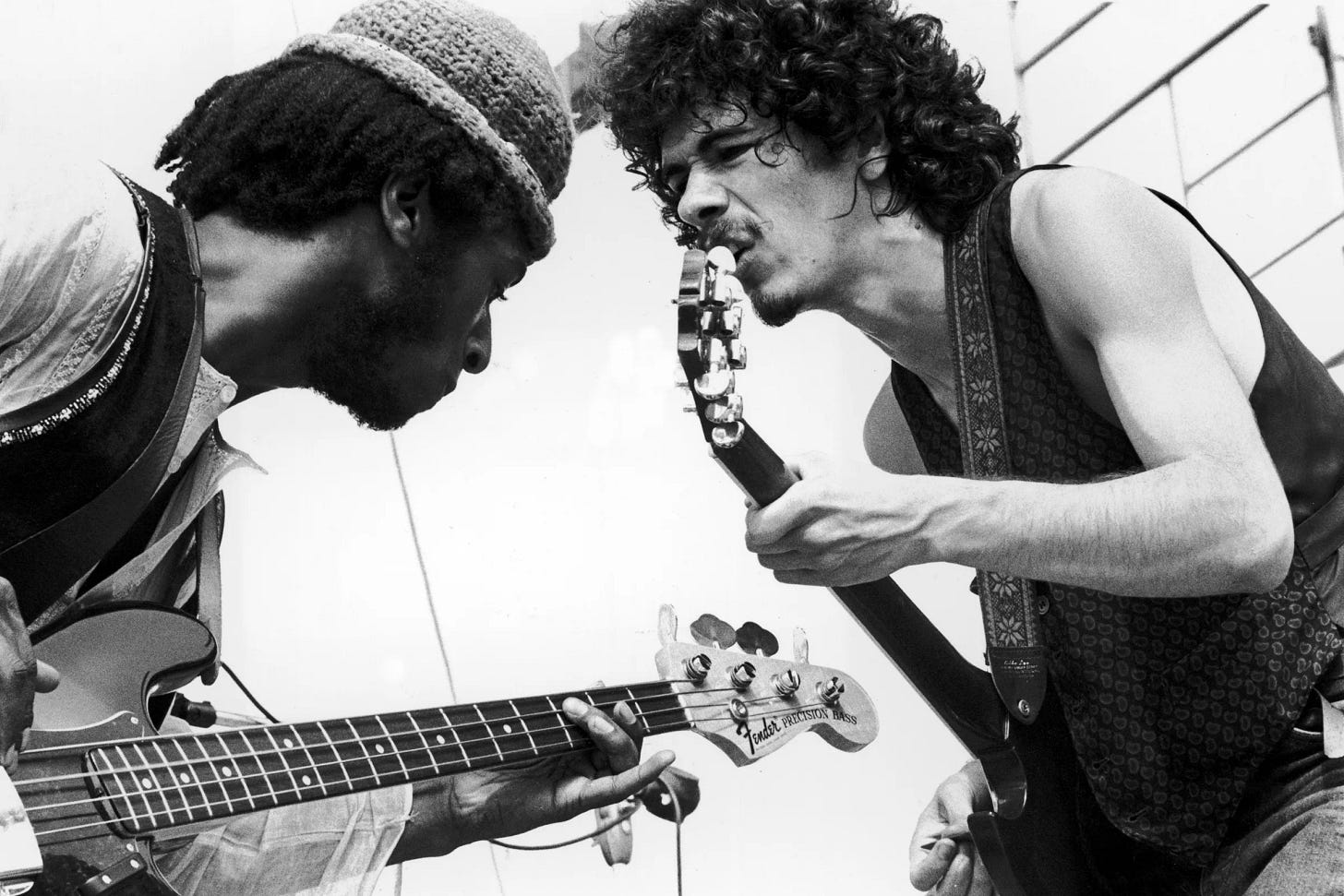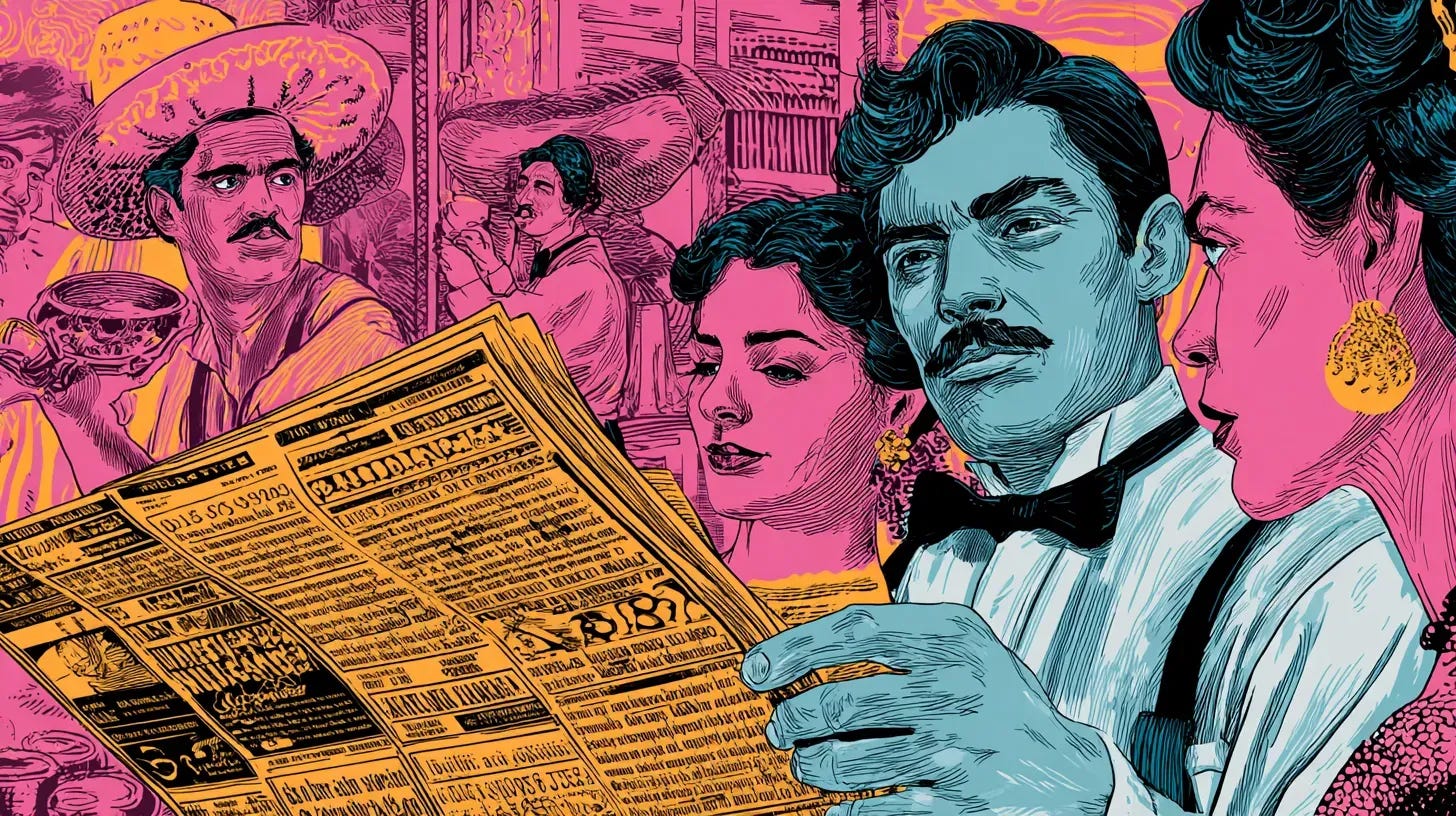The Evolution From Walkouts To Hashtags
The tools have evolved—from picket signs to posts, from marches to livestreams—but the purpose remains the same.
JOIN TODAY and get 10% off your Daily Chela Insider subscription for an entire year.
In March 1968, thousands of Mexican-American students walked out of East Los Angeles high schools to protest segregation, corporal punishment, and a system that denied them dignity.
The East L.A. Walkouts, known as the “Blowouts,” weren’t just about education; they were a collective declaration that Chicano youth mattered. Their protest was fueled by word of mouth, community ties, and the kind of solidarity that spread from classrooms to neighborhoods.
That same spirit of unity, that electric sense of belonging, still exists today. It has simply evolved. Where once students gathered on school lawns, now they gather on screens. Where news of a protest once spread through flyers or whispered plans among friends, it now travels through posts, hashtags, and livestreams.
The medium has changed, but the message—justice, identity, pride—remains the same.
The Rhythm Of The People
Louie Pérez of Los Lobos once said, “You didn’t have to go on a picket line to absorb the impact of the Chicano Movement of the ’60s and ’70s.”
His words capture something essential about how activism transcends its physical boundaries. During that era, activism extended not only to marches but also to music, art, and everyday acts of resistance.
Bands like El Chicano, Tierra, Malo, Thee Midniters, Azteca, Tower of Power, SAPO, and many more transformed music into a powerful tool for solidarity, performing benefit concerts for César Chávez and singing songs that carried pride and defiance in equal measure.
You didn’t have to take a sign to feel the change; it was in the air, the art, the rhythm of the people.
Today’s generation embodies that same truth. Many young Chicanos are still protesting, organizing, and mobilizing in the streets, but they’re also doing so through the digital realm. Social media has become the new word of mouth, a modern organizing tool that can instantly reach thousands. A post, a story, can rally support, spread information, or amplify injustice in seconds.
Where once messages were passed from friend to friend or student to student, now they can ripple across cities and countries.
Collective Effervescence
Critics sometimes dismiss digital activism as shallow, claiming that reposting a story or sharing a hashtag isn’t “real activism.” But that view overlooks the deeper social function of communication and connection.
As Pérez’s quote reminds us, activism has always taken many forms—it’s not just about marching but about feeling, expressing, and spreading awareness. It’s about absorbing the movement, allowing it to permeate culture and into everyday life.
Sociologist Émile Durkheim described this phenomenon as collective effervescence, the energy and unity people feel when they come together for a shared cause. That feeling coursed through the crowds of the 1968 Walkouts, but it also pulses through online movements today.
When young people flood timelines with calls for justice, when digital art commemorates Chicano heroes, or when TikTok videos remix protest songs with modern beats, that same effervescence is alive. The collective emotion binds people, even across digital distance.
At the same time, cultural theorist Stuart Hall’s concept of cultural resistance helps explain why these new forms of expression matter. For Hall, culture itself is a site of struggle—a place where power is contested and identity is shaped. Social media, with all its flaws, has become that space for Chicanos and Latinos today.
Platforms like Instagram and TikTok function as virtual barrios, where stories are shared, histories retold, and pride performed. Through memes, reels, poetry, and art, young people are claiming visibility and rewriting narratives once controlled by others.
The Importance Of Music
Music continues to play a decisive role in this continuum of activism. Just as the Chicano Movement of the 1960s found its soundtrack in Santana or Malo, today’s generation has to name a few artists, such as Cuco, The Red Pears, Omar Apollo, and Bad Bunny, musicians who blend genres and identities while carrying forward themes of love, struggle, and belonging.
When their music plays over protest footage or accompanies social media montages celebrating Chicano heritage, it’s not just background—it’s the latest verse in a decades-long anthem of resistance.
The tools have evolved—from picket signs to posts, from marches to livestreams—but the purpose remains the same. The Chicano spirit of unity, pride, and self-determination endures. Each generation builds on the last, using whatever medium is available to speak truth and demand visibility.
Half a century ago, the students of East L.A. proved that change could start with a walkout. Today’s youth prove it can also start with a post. The spark of the movement hasn’t dimmed; it’s just found new ways to light the path forward.
Sammy blends sociology with hands-on experience in music research, documentary filmmaking, and journalism. With a talent for in-depth research and a knack for finding compelling narratives, he aims to shed light on stories that resonate and reveal the pulse of societal change. He also brings a unique sociological perspective to all things pop culture.
JOIN TODAY & Get 10% Off A Daily Chela Insider Subscription For A Year!
Subscribers Get Exclusive News, Videos & Stories:
Our mission is to provide a platform for Mexican Americans, and cover news with the depth and context it deserves.
Here’s how you can help:
Make a Small Monthly Contribution: Your financial support will help us cover operational costs, pay our dedicated team, and expand our reach to more readers.
How To Support:
To subscribe, click on the button below. Thank you for your support and for believing in the power of independent media. Together, we can make sure that every voice is heard and every story is told.







